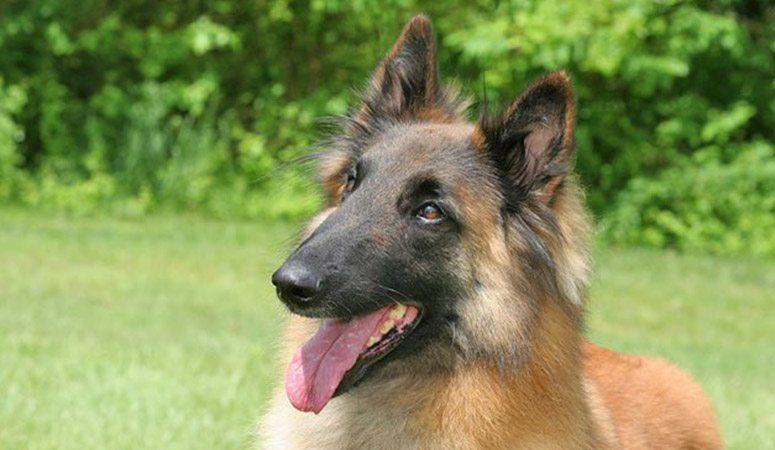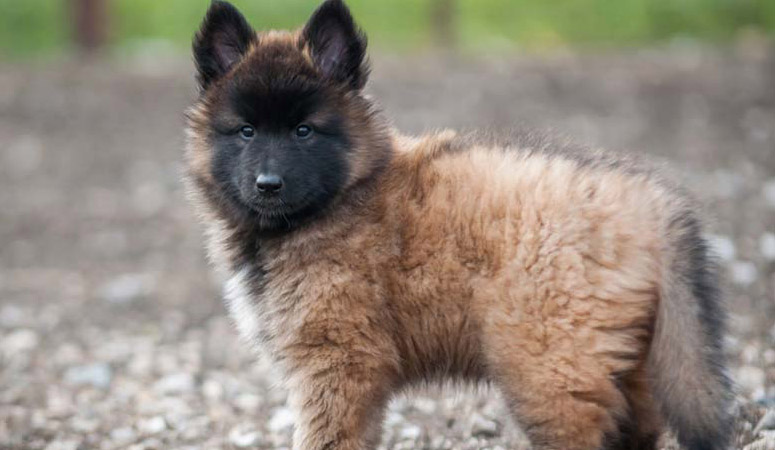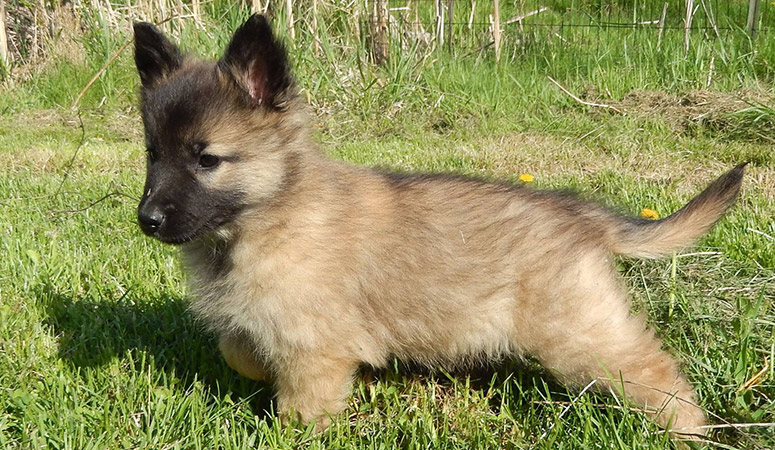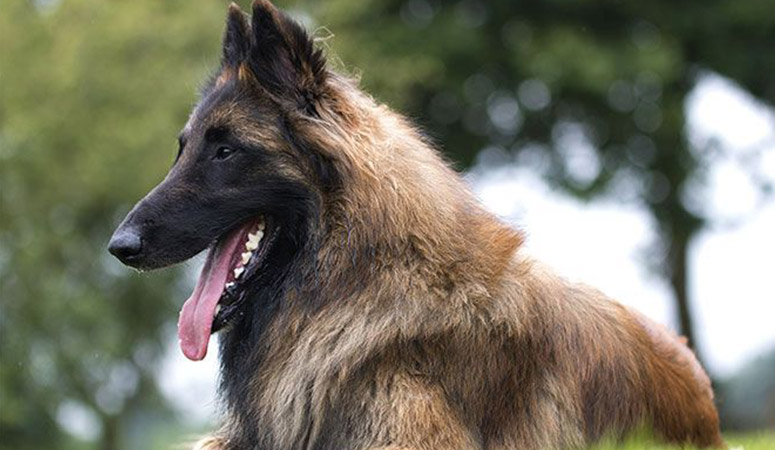Belgian Tervuren
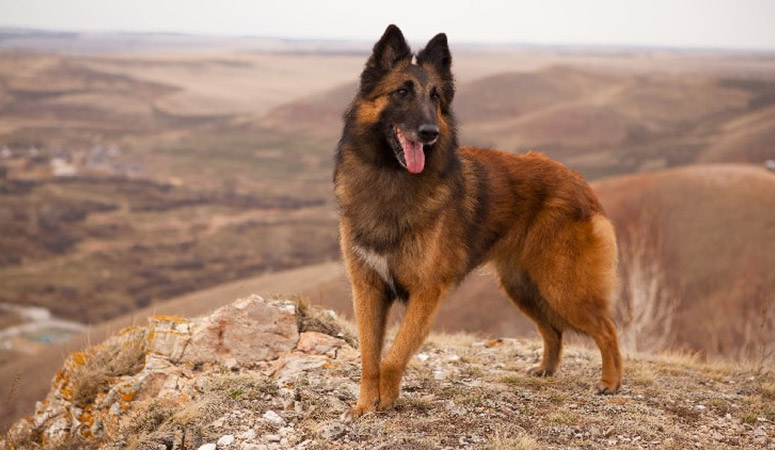
Intelligent, athletic, and combined with elegance and strength, Belgian Tervurens are versatile performers in any number of activities, including their original job-herding. Tervs are one of four distinct herding breeds developed in different regions of Belgium, and known to be affectionate and possessive with loved ones.
| Other Names | Belgian Sheepdog Tervuren, Belgian Shepherd Dog (Tervuren), Belgian Shepherd Dog Tervuren, Chien de Berger Belge, Terv, Tervuren |
| Color | red, fawn, also grey with black overlay. Black mask on face. |
| Height | Males: 23-27 inches. Females: 21-25 inches. |
| Weight | Males: 55-66 pounds. Females: 44-55 pounds. |
| Life Span | 12-14 years |
| Personality | Courageous, Alert, Intelligent |
| Exercise | Energetic |
| Origin |
| Popularity | #103 |
| Groom Needs | 2-3 Times a Week |
| Kids Friendly | Yes with supervision |
| Dog Friendly | Yes with supervision |
| Watch Dog | |
| Family Dog | |
| Litter Size | 6-10 |
Belgian Tervuren Pictures
Belgian Tervuren Video
Introduction
The first thing you realize about the Black Russian Terrier is that he is bold and big – but did you know that actually, he’s not really a terrier at all. This so-called terrier is in actual fact classified as a working dog. He’s bright, smart, and with plenty of brawn. They reach a height of around 30 inches at the shoulders and weigh in at around 150 pounds. They have double coat of medium length, always black. It’s no surprise that these dogs are used in both military and police. Nevertheless, they make faithful and loving companions, needing to feel connected to their home and owners. If you are a new dog owner, the size and smartness of this dog might overpower you because he does require firm and consistent leadership, with plenty of exercise, attention, and a happy home. They can take up to 3 years to mature. They will definitely sound the alarm when an intruder is around. He needs a daily walk of at least half an hour, as well as taking every opportunity to keep him mentally engaged and stimulated. His coat is described as tousled, curly, or wiry. It needs daily brushing, as well as clipping to keep him in good condition; and failing to maintain coat will make him get into tangles and matting.
Living with Belgian Tervuren
The Belgian Tervuren has a double-layer coat, with a dense, protective undercoat covered by a harsher outer coat. Weekly brushing out your dog’s coat about 15 to 20 minutes to remove dead hair and prevent mats or tangles, and daily brushing is required during the shedding seasons in the spring and fall.
Check and clean your dog’s ears with a gentle, dog-friendly cleanser to prevent dirt buildup that may cause infection. And brush their teeth at least two or three times a week to remove tartar buildup and the bacteria that lurk inside it, daily brushing is better to keep fresh breath and prevent gum disease. Trim the nails regularly or every month to prevent cracking.
The Belgian Tervuren requires two hours of vigorous activity every day, which could be in the form of two or three exercises or play sessions. And your dog would be very happy to be by your side if you like to hike or jog. It is recommended to provide your dog with some off-leash exercise in a large, securely areas if possible in addition to long walks or jogging. Besides, their strong herding instinct and quick intelligence make them suitable for any number of activities, such as agility training, herding trials, and obedience competitions.
This is not a breed for everyone, the owner should expect to spend a good amount of active quality time with his canine friend.
Generally, it is recommended to feed the Belgian Tervuren with two to three cups of high-quality dry dog food, divided into two meals. And there should be clean and fresh water at all times. More importantly, the food amount should depend on the dog’s weight, size, age, and activity level.
Some dogs are easy to get overweight, so you need to watch their calorie consumption and weight level all the time. Treats may be an important aid in training, but excessive intake can lead to obesity. Also, owners need to distinguish which human food is safe for dogs and which are not. If you have any problems with your dog’s weight or diet, just consult from your veterinarian.
Belgian Tervurens are prone to the following health conditions: hip and elbow dysplasia, hypothyroidism, epilepsy, progressive retinal atrophy, etc.
Major concerns: seizures
Minor concerns: elbow dysplasia, CHD, PRA, hypothyroidism, allergies
Occasionally seen: cataract, PPM, hemangiosarcoma, pannus
Suggested tests:
Hip Evaluation
Elbow Evaluation
Thyroid Evaluation
Ophthalmologist Evaluation
Total Annual Cost: $3239
Cost is estimated for the first year and may vary depending on many factors, such as dog food, health care, leash, collar, licensing, possible fencing, crates, training and obedience classes, dog-walking, grooming, treats, toys, flea, tick, and heart-worm meds, microchips, etc.
Belgian Tervurens are intelligent and can learn basic commands with ease. The owner needs to know that they are sensitive dogs, it is recommended to use a gentle approach to training. Positive reinforcement, praise, and dog treats garner the best results, be firm, calm, and consistent with them.
Socialization and obedience training is a must for the Belgian Tervuren. It is helpful to develop them into well-adjusted and well-mannered adults by exposing the puppy to different people, places, and sets. Also, Belgian Tervurens are suitable for continued training, they enjoy working with the owner to participating in canine sports, such as agility and flyball, and excel in herding trials.
History
This dog was born in the Soviet Army’s Red Star kennel.
It was immediately before and during the Cold War era that Soviet scientists were given the job of developing an ‘ideal’ working dog – they wanted to use this dog to patrol their borders, chase down intruders, and protect and guard work camps, etc. This dog had to have endurance and ability and not succumb to the icy cold weather as well. 17 breeds are said to have been used to arrive at a dog called the Black Russian Terrier.
When the military camps closed, etc. the Red Army sold off the dogs to civilians, so these dogs entered the public sector in 1957. A while later, in 1958, the Soviet Army published the first breed standard for this amazing dog but it was only in 1981 that the Soviet Ministry of Agriculture declared the Black Russian Terrier as a breed. Private breeders started aiming to enhance the appearance of the dogs.
It was also around the end of the Cold War that the first Black Russian Terriers were imported to the United States, gaining recognition at the AKC in 2004.
Helpful Information
Breed Club: AMERICAN BELGIAN TERVUREN CLUB
Breed Club Link: http://www.abtc.org/
Breed Club Rescue: Belgian Tervuren Rescue Inc.
Breed Club Rescue Link: http://www.belgiantervurenrescue.com/

